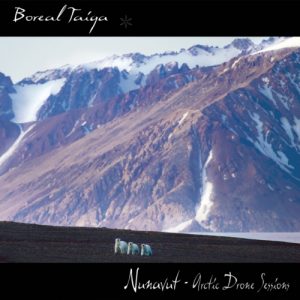|
Historically curious and immense, the arctic and subarctic areas have been a huge interest for sound artist Boreal Taiga’s for many years already. “Nunavut” was inspired by talks the composer had with some friends working at the Jet Propulsion Laboratory (JPL) in Pasadena. They told him to watch the documentary “Passage To Mars, An Otherworldly Voyage On Earth” which is about NASA’s pseudo-Mars landscape project located on Devon Island, Nunavut, Canada in the high Arctic next to Greenland populated by the Inuit. The land is arctic permafrost, with many islands, mountain ranges, and some of the harshest conditions on Earth. The album was also inspired by the landscapes, flora, fauna, and cultures that reside there. With the music leaning towards a more droning sound, coupled with some hidden dub, it was a project Boreal Taiga worked on for over a year. He even did take a few test tracks written ages ago and reworked them, almost to the point of a totally different sound than he had anticipated. Still long-form, immersive, and hypnotizing, the 77-minute/9- track result (freeform dronescape washes dressed with various environmental recordings) is rooted in more profound minimal ambient than before, while also proving less cinematic. Both “Kugaaruk Echoes” and “Meighen Island” feature rhythmic, slightly melodic components merging with dreamy drone pads while nature’s beauty and expanse are shining clearly through the slow unfolding sonic leaves of “Boothia Peninsula”. And compared to the previous takes, the last track “Devon Ice Cap MOE” is probably the most filmic exercise. For that piece, nature photographer and filmmaker Richard Sidey- with whom Boreal Taiga collaborated previously- produced a beautiful video featuring footage shot near Devon Island: |
| Website: borealtaiga.com
You can see what reviews I have done of this artist on the Boreal Taiga artist page
Sonic Immersion © 2025 |

